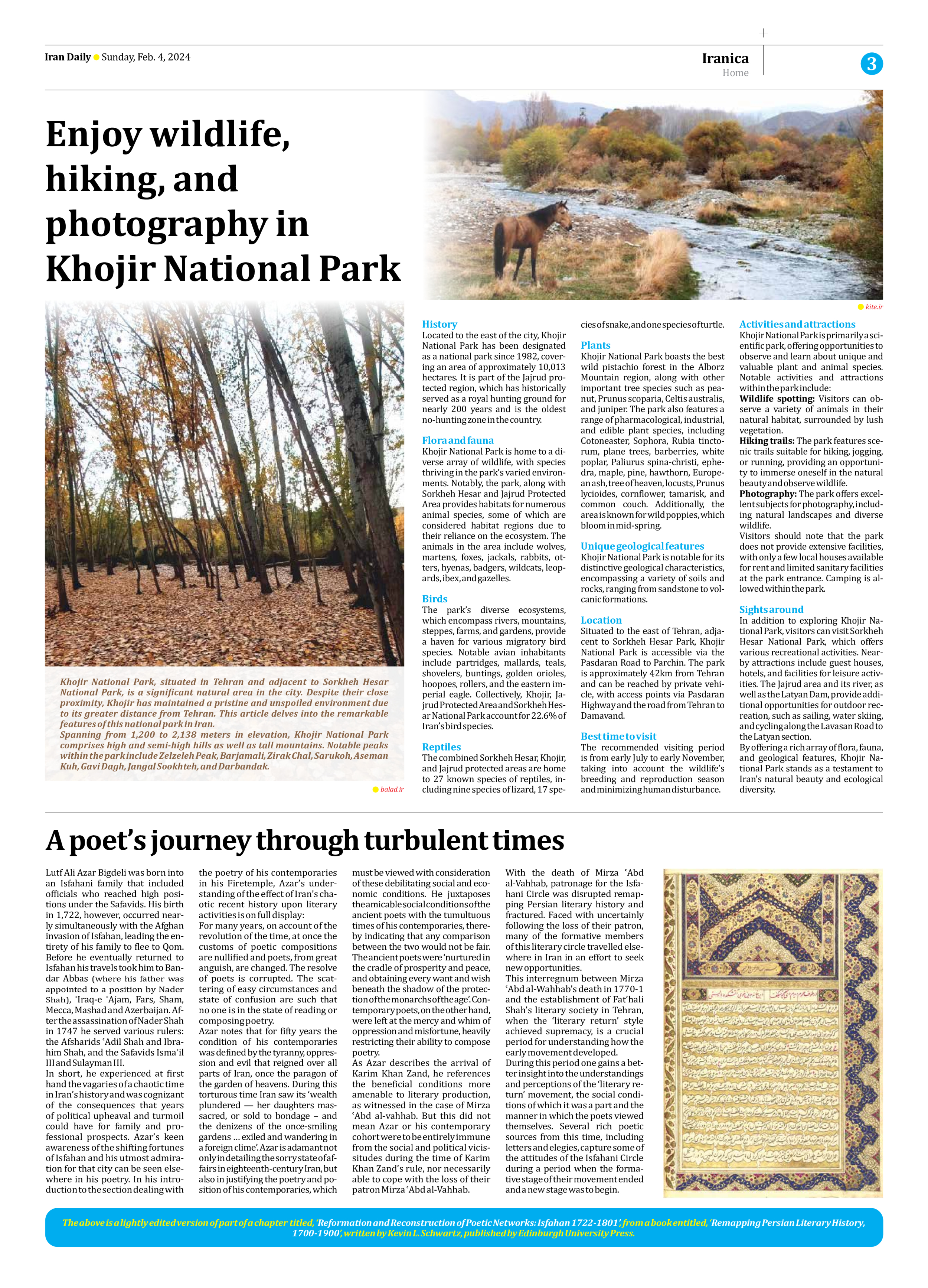
A poet’s journey through turbulent times
Lutf Ali Azar Bigdeli was born into an Isfahani family that included officials who reached high positions under the Safavids. His birth in 1,722, however, occurred nearly simultaneously with the Afghan invasion of Isfahan, leading the entirety of his family to flee to Qom. Before he eventually returned to Isfahan his travels took him to Bandar Abbas (where his father was appointed to a position by Nader Shah), ʿIraq-e ʿAjam, Fars, Sham, Mecca, Mashad and Azerbaijan. After the assassination of Nader Shah in 1747 he served various rulers: the Afsharids ʿAdil Shah and Ibrahim Shah, and the Safavids Ismaʿil III and Sulayman III.
In short, he experienced at first hand the vagaries of a chaotic time in Iran’s history and was cognizant of the consequences that years of political upheaval and turmoil could have for family and professional prospects. Azar’s keen awareness of the shifting fortunes of Isfahan and his utmost admiration for that city can be seen elsewhere in his poetry. In his introduction to the section dealing with the poetry of his contemporaries in his Firetemple, Azar’s understanding of the effect of Iran’s chaotic recent history upon literary activities is on full display:
For many years, on account of the revolution of the time, at once the customs of poetic compositions are nullified and poets, from great anguish, are changed. The resolve of poets is corrupted. The scattering of easy circumstances and state of confusion are such that no one is in the state of reading or composing poetry.
Azar notes that for fifty years the condition of his contemporaries was defined by the tyranny, oppression and evil that reigned over all parts of Iran, once the paragon of the garden of heavens. During this torturous time Iran saw its ‘wealth plundered — her daughters massacred, or sold to bondage – and the denizens of the once-smiling gardens … exiled and wandering in a foreign clime’. Azar is adamant not only in detailing the sorry state of affairs in eighteenth-century Iran, but also in justifying the poetry and position of his contemporaries, which must be viewed with consideration of these debilitating social and economic conditions. He juxtaposes the amicable social conditions of the ancient poets with the tumultuous times of his contemporaries, thereby indicating that any comparison between the two would not be fair. The ancient poets were ‘nurtured in the cradle of prosperity and peace, and obtaining every want and wish beneath the shadow of the protection of the monarchs of the age’. Contemporary poets, on the other hand, were left at the mercy and whim of oppression and misfortune, heavily restricting their ability to compose poetry.
As Azar describes the arrival of Karim Khan Zand, he references the beneficial conditions more amenable to literary production, as witnessed in the case of Mirza ʿAbd al-vahhab. But this did not mean Azar or his contemporary cohort were to be entirely immune from the social and political vicissitudes during the time of Karim Khan Zand’s rule, nor necessarily able to cope with the loss of their patron Mirza ʿAbd al-Vahhab.
With the death of Mirza ʿAbd al-Vahhab, patronage for the Isfahani Circle was disrupted remapping Persian literary history and fractured. Faced with uncertainly following the loss of their patron, many of the formative members of this literary circle travelled elsewhere in Iran in an effort to seek new opportunities.
This interregnum between Mirza ʿAbd al-Wahhab’s death in 1770-1 and the establishment of Fat’hali Shah’s literary society in Tehran, when the ‘literary return’ style achieved supremacy, is a crucial period for understanding how the early movement developed.
During this period one gains a better insight into the understandings and perceptions of the ‘literary return’ movement, the social conditions of which it was a part and the manner in which the poets viewed themselves. Several rich poetic sources from this time, including letters and elegies, capture some of the attitudes of the Isfahani Circle during a period when the formative stage of their movement ended and a new stage was to begin.
The above is a lightly edited version of part of a chapter titled, ‘Reformation and Reconstruction of Poetic Networks: Isfahan 1722-1801’, from a book entitled, ‘Remapping Persian Literary History,
1700-1900’, written by Kevin L. Schwartz, published by Edinburgh University Press.







